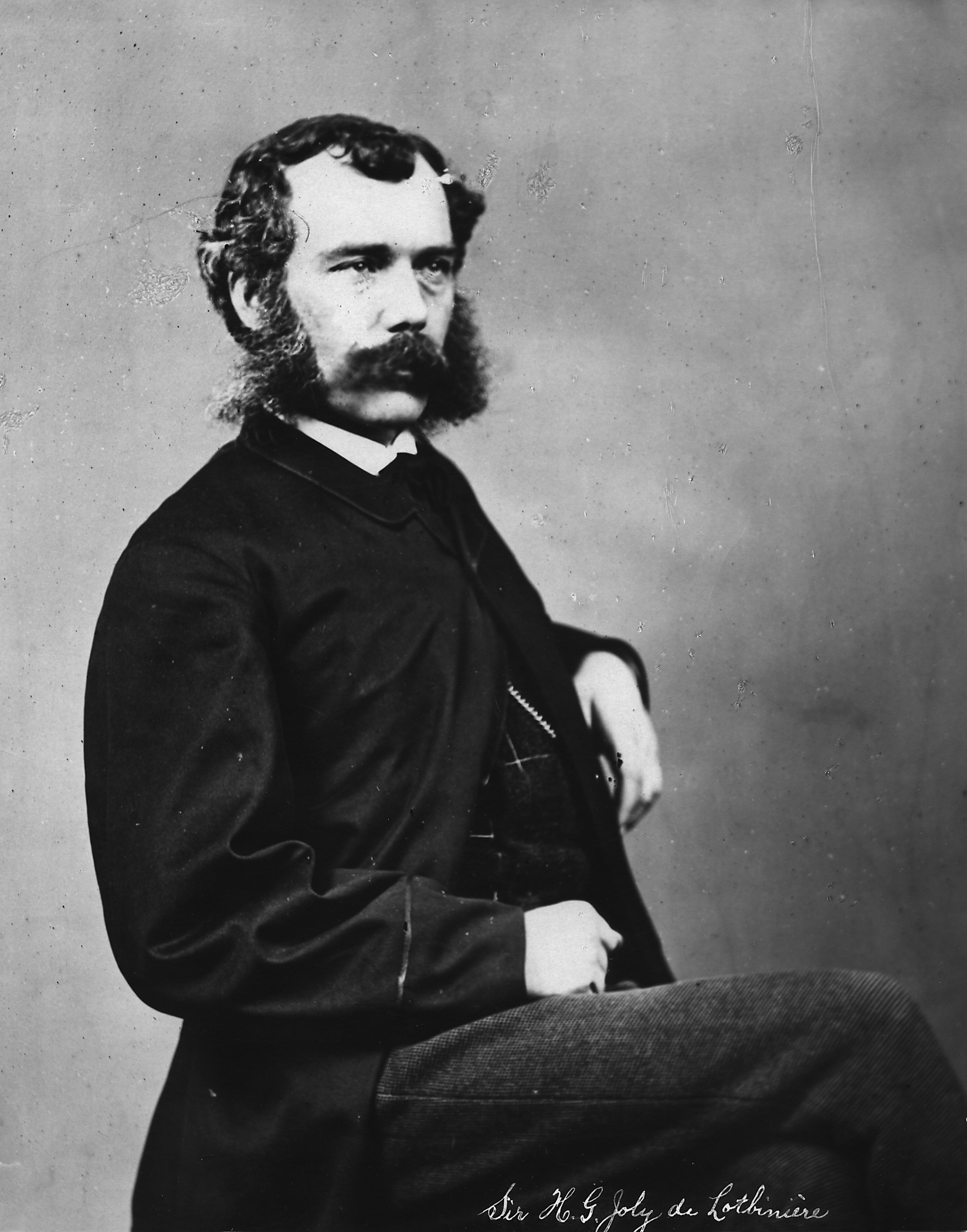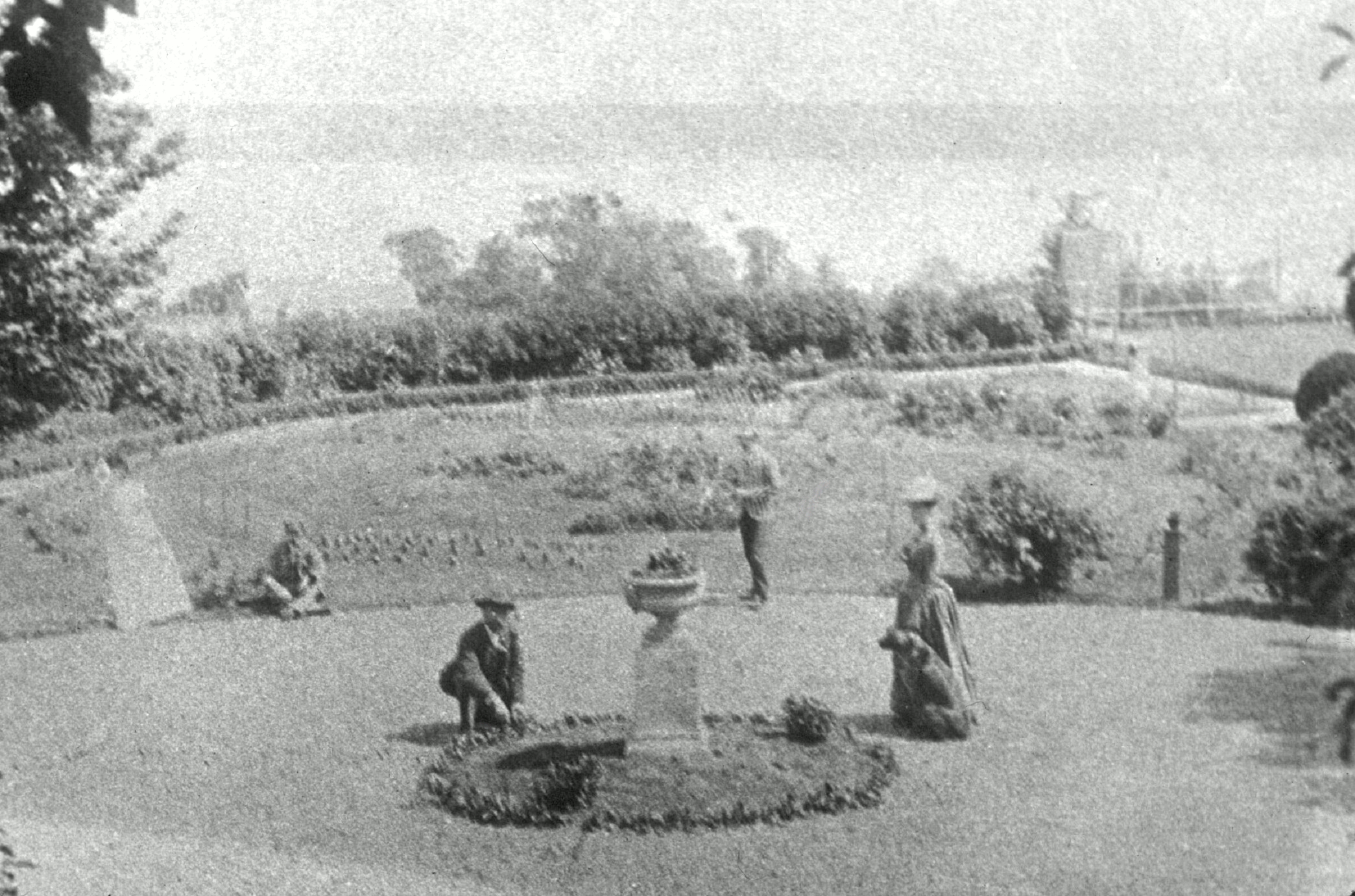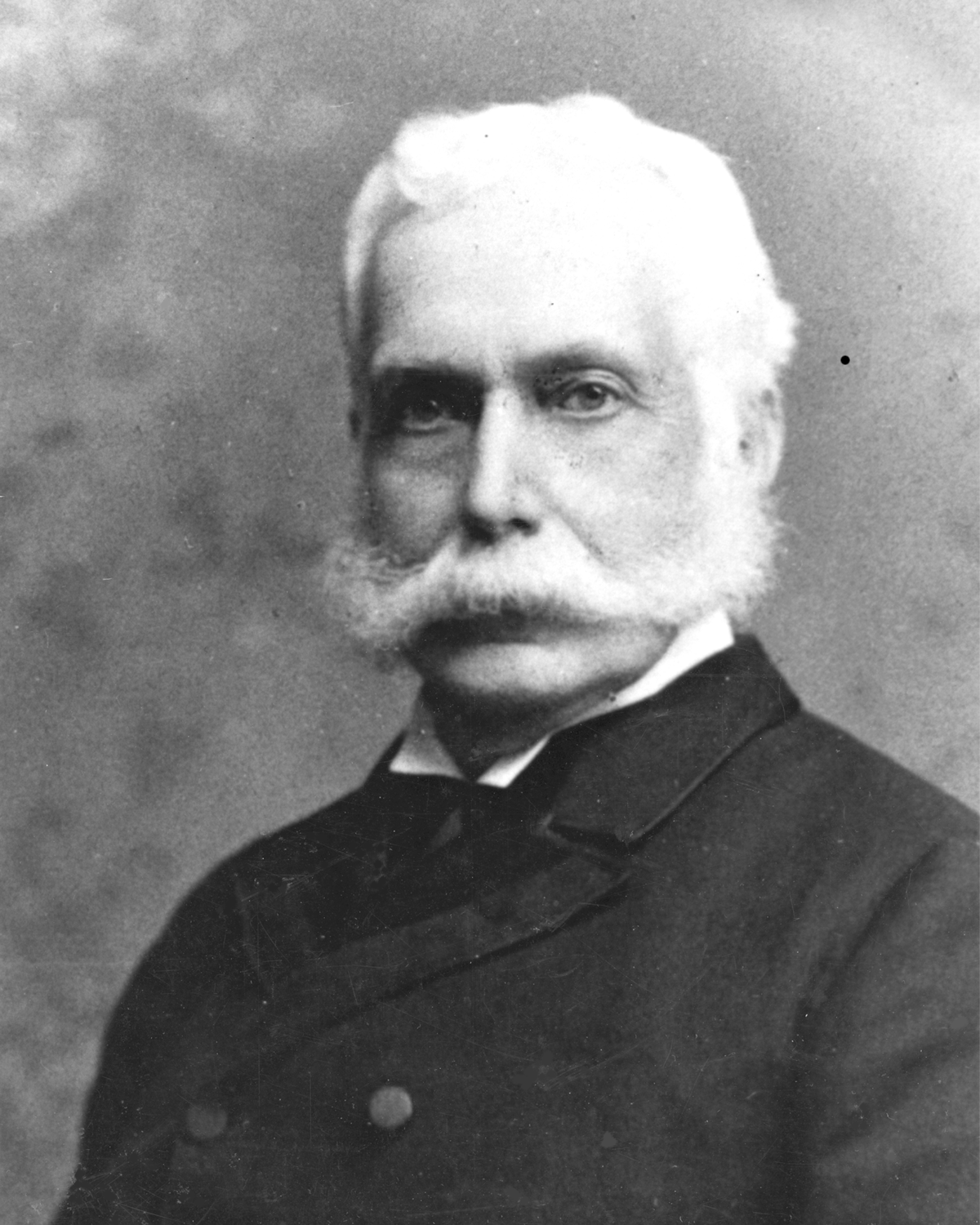
Lotbinière Before British Columbia
Life

Sir Lotbinière was born Henri-Gustave Joly in Epernay, France, on December 5, 1829. He and his family emigrated to Lower Canada in 1830 and converted to the Anglican faith folowing their arrival.
Henri-Gustave’s mother, Julie-Christine Chartier de Lotbinière, had inherited the seigneury of Lotbinière, South-West of Québec City on the Southern bank of the Saint Laurence River. She presided over the land as seigneur until she bequeathed it to Henri-Gustave, as well as the position of seigneur and the title ‘de Lotbinière,’ in 1860. 1
Henri’s father, Gaspard-Pierre-Gustave Joly, a Swiss merchant, and a Calvinist, 2 married the Protstant Julie-Christine in 1828, although Julie retained the property and title of Lotbinière until Henri-Gustave inherited it in 1860.3 A young Sir Henri
From 1836 to 1849, Henri-Gustave studied in Paris, proceeding eventually to the study of law. Returning to Canada, he apprenticed in his new profession from 1850-1855 when he was admitted to the Bar.
In 1856, on the 6th of May, Henri-Gustave married Margaretta Josepha Gowen, daughter of trader/merchant Hammond Gowen. Their marriage took place in the Anglican Church of the Holy Trinity in Québec City. 4
Having practiced law for many years, Henri-Gustave entered politics in Québec at the time of Confederation in 1867 and remained a prominent person in Québec politics until 1900 when he was appointed Lieutenant Governor of British Columbia; a position he held until 1906. 5
Henri-Gustave was awarded honorary doctorates from Bishop’s College in 1887 and Queen’s College in Kingston in 1894.6 He was also made a knight in the orders of Saint Michael and Saint George in 1895, which made him Sir Henri-Gustave Joly-de Lotbinière.
Following his term as Lieutenant Governor of British Columbia, Henri-Gustave returned to Québec. He died on November 16, 1908 at age 78. A memorial service was held in his honor at the Church of the Holy Trinity, the same Cathedral in which he and his wife were married. He was later buried at Mount Hermon cemetery, in Sillery, Québec.
Interests

While there is little information available about Henri-Gustave’s interests prior to his inheritance of the seigneurie Lotbinière in 1860, it becomes clear after that point that he had a particular interest and proficiency in forestry and horticulture.
The Lotbinière manor in Quebec
The Lotbinière family had long cultivated and beautified the family estate.7 When Julie-Christine and Pierre-Gustave married, Pierre remarked at the rare beauty of the estate. All of the seigneurs who oversaw the Lotbinière estate took great care to continue the tradition of natural beauty and gardening fancy, and Henri-Gustave was no different. He experimented by planting different types of trees on the property, this being one of his particular passions, as well as his personal contribution to the field of horticulture.8 His experiments brought plants and trees from different climates and different parts of the world to the estate to see how they would fare on its grounds. He is remembered for his adage: “Plant with care, cultivate with perseverance.”9
Even in his political career, Henri-Gustave was a gardener at heart. He campaigned vigorously for the protection and conservation of Crown forests against fire and waste, and helped adopt measures towards this end. Furthermore, in 1877, as Minister of Forests in the province of Québec, he helped create the Reforestation Society of Québec. He also wrote the first report on the state of Canadian forests in that same year.10
Moving away from his family’s traditional estate in Québec did not blunt Henri-Gustave’s passion for nature. In fact, he is credited with the beautification of the Lieutenant Governor’s mansion, as well as having planted numerous trees, shrubs and other plants on the property. His contributions to his family’s estate, as well as the field of horticulture are many, and he will be remembered for his devotion to his art.
Politics in Québec

Sir Henri Gustave Joly de-Lotbinière played a prominent role in Québec politics before coming to British Columbia as Lieutenant Governor in 1900. While his term in BC may have had its turbulent moments, his political career in Québec was no less exciting.
Lotbinière
was elected to
the legislature
of Québec for the riding of Lotbinière in 1861.
In 1863,
Lotbinière ran again, this time unopposed, and was thus
reelected.11
As a member of the
Parti Rouge, Lotbinière was
opposed to Confederation. The Parti Rouge also stood for ideals such as
republicanism and the separation of church and state, something that
would not take root in Québec until the 1960s.12
Lotbinière during the Quebec years
After confederation, Lotbinière joined the Liberal party, the contemporary anti-federalist party, and was elected member of both the Provincial Legislature and the House of Commons.13 It would have been a difficult task, to be sure, to be a member of both assemblies, but Lotbinière pulled it off with ease. In 1869 he was named leader for the Opposition Liberals in the Québec Legislature. He remained Leader of the Opposition and was reelected in 1871. Lotbinière was also reelected as an MP in 1872.
By this point, even if Lotbinière had wanted to continue his tradition of dual representation in both the Provincial and Federal Parliaments, this practice was ended in 1874 so Lotbinière decided to remain in Québec politics. Lotbinière also refused a senatorial appointment that same year (as well as another in 1877), attesting to his desire to remain in his home province. He appears to have been keen on remaining in Québec politics, however, as he was again reelected to the Legislature in 1875. In addition to his refusal to be appointed to the senate, he also refused to return to Ottawa as the Minister of Agriculture under Prime Minister Mackenzie.14
1878 saw Lotbinière finally become premier. He was reelected as Premier in 1879 and served until 1885 when he resigned his seat in protest of the hanging of Louis Riel.15 Lotbinière moved away from the political scene and remained on his estate where he focused on his horticultural pursuits.
While not an active member of political life, he nonetheless retained his political ties and continued to be interested in politics. In 1896 Lotbinière returned to active politics and won a seat in the federal riding of Pontneuf. Prime Minister Laurier appointed him as controller of Inland Revenue and eventually Lotbinière formally entered the cabinet in this position.16 For his support and tireless work promoting a united Canada, he was recognized by both Queen Victoria and Laurier and was soon appointed as the Lieutenant Governor of British Columbia. Laurier needed a man he could trust and who had plenty of political experience to help keep BC together and also keep the province within the union. Laurier would not be disappointed.
Endnotes (click on number to return to place in text)
1. Assemblée nationale du Québec, Les Parliamentaires du Québec depuis 1792: Henri Gustave Joly de-Lotbinière, Université Laval (1998).
2. Encyclopédie de l'histoire du Québec,
<http://faculty.marianopolis.edu/c.belanger/QuebecHistory/encyclopedia/jolydelotbinierebio.htm>
3. Les Parliamentaires du Québec depuis 1792: Henri Gustave Joly de-Lotbinière
4. Jackman, S.W., The Men at Cary Castle, Morris Printing Company Ltd., Victoria (1972).
5. Ibid. Also Les Parliamentaires du Québec depuis 1792: Henri Gustave Joly de-Lotbinière.
6. Les Parliamentaires du Québec depuis 1792: Henri Gustave Joly de-Lotbinière.
7. Domaine Joly de-Lotbinière, La mémoire des grands arbres, June 2003.
8. Ibid.
9. Ibid.
10. Les Parliamentaires du Québec depuis 1792: Henri Gustave Joly de-Lotbinière.
11. The Men at Cary Castle.
12. Ibid.
13. Ibid. Also Les Parliamentaires du Québec depuis 1792: Henri Gustave Joly de-Lotbinière.
14. Ibid.
15. Ibid.
16. Les Parliamentaires du Québec depuis 1792: Henri Gustave Joly de-Lotbinière.
Click
the images to view them in
context.


